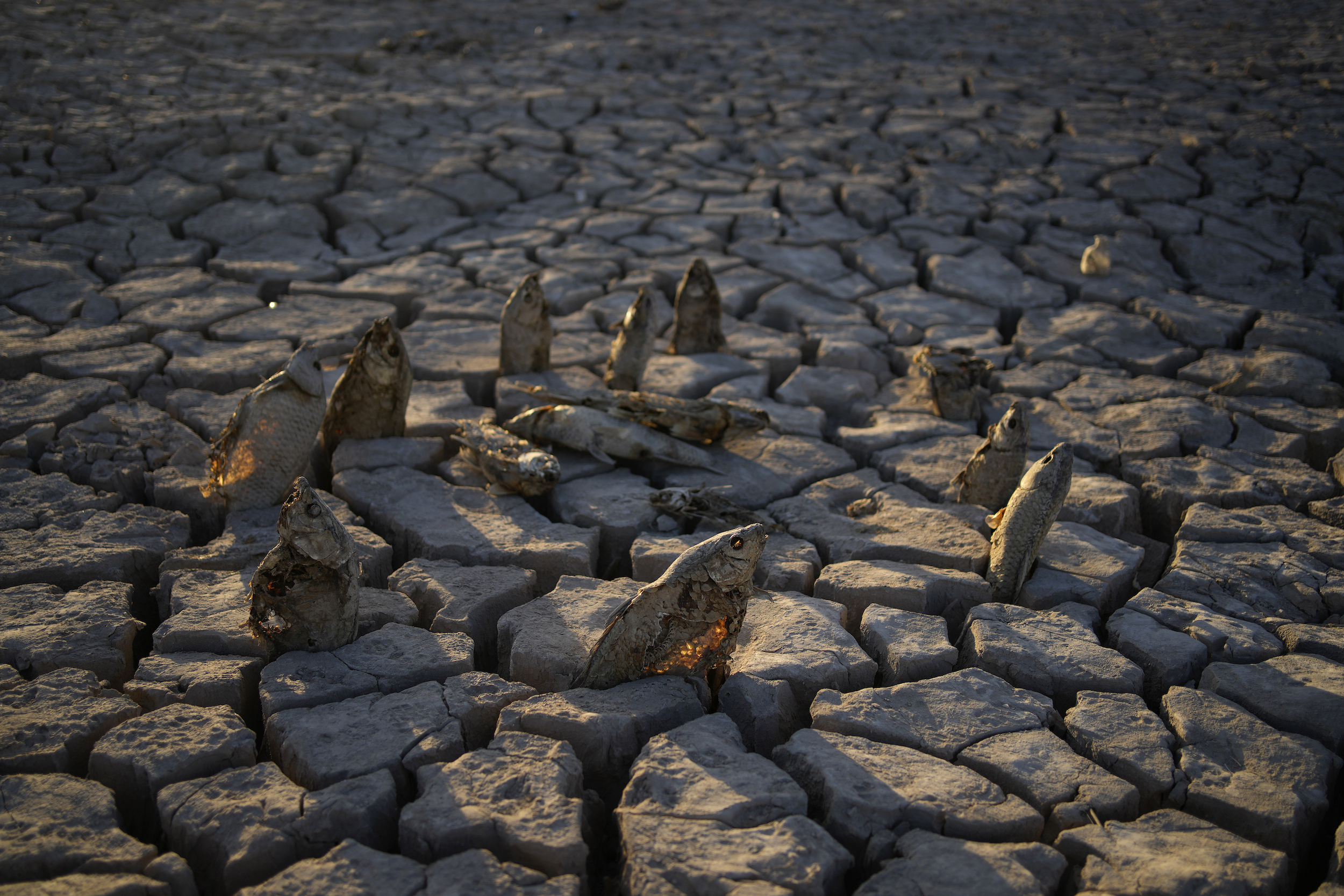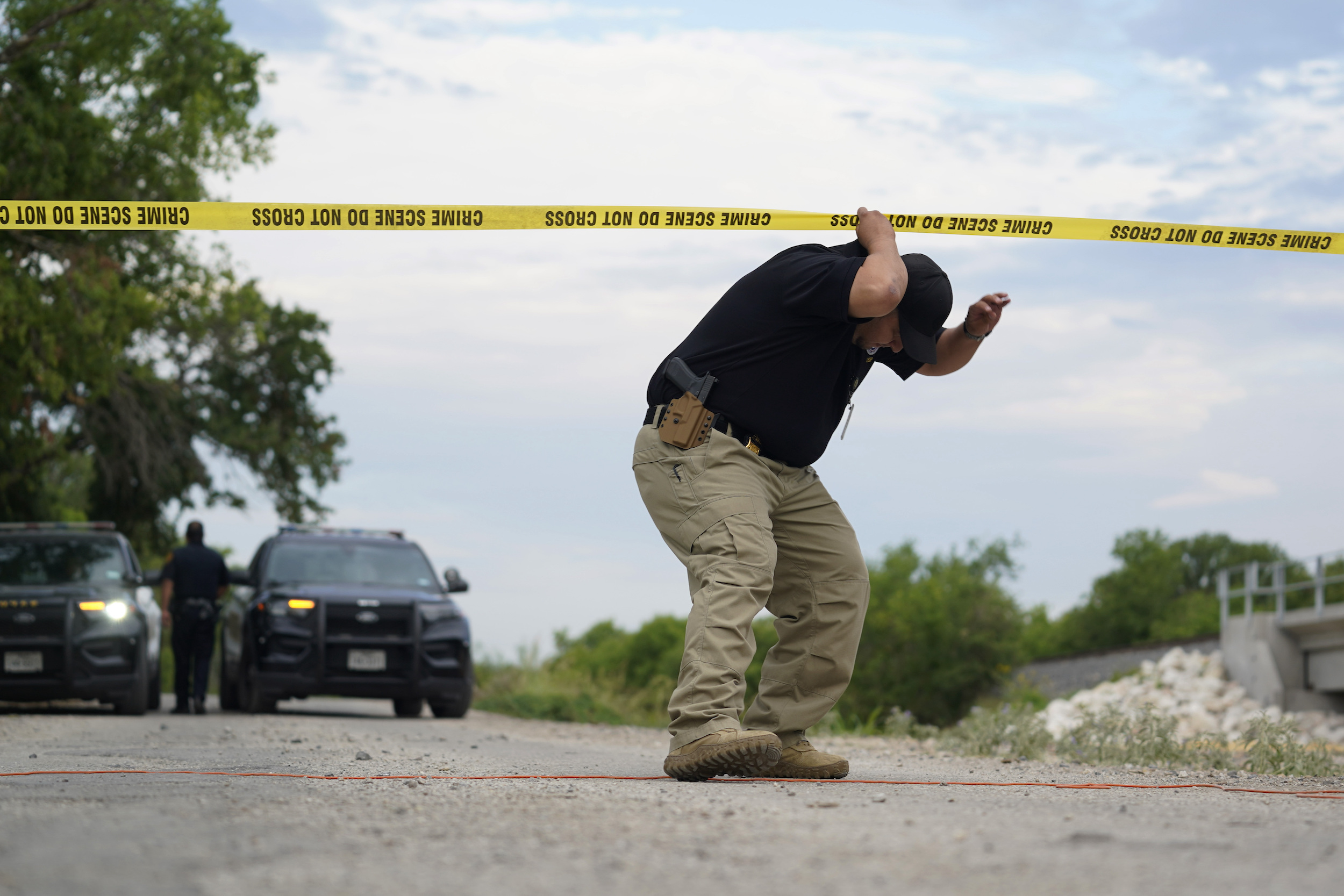 Covering COVID-19 is a daily Poynter briefing of story ideas about the coronavirus and other timely topics for journalists, written by senior faculty Al Tompkins. Sign up here to have it delivered to your inbox every weekday morning.
Covering COVID-19 is a daily Poynter briefing of story ideas about the coronavirus and other timely topics for journalists, written by senior faculty Al Tompkins. Sign up here to have it delivered to your inbox every weekday morning.
Hot weather is flat-out bad for most medications. The heat can degrade the components of a medicine. Now that so many prescriptions are delivered, how will they fare when they sit in a mailbox or delivery truck while high temperatures bake patches of the planet this summer?
Verywell Health explains the issue:
There are no medications that can be stored at temperatures above 86 degrees F, since hot temperatures tend to degrade most formulations.
Some medications are more stable than others. Most remain at their most stable if they are transported and stored at room temperature.
Some medications that have to be stored at room temperature can tolerate what is known as “controlled excursions” — short periods to accommodate necessities such as shipping — at temperatures up to 86 degrees F.
Some examples of medication storage recommendations:
- Lipitor (atorvastatin calcium) for treatment of high cholesterol: Room temperature
- Toprol (metoprolol succinate) for treatment of hypertension and heart failure: Room temperature; between 59 degrees and 86 degrees F for excursions, if needed
- Norvasc (amlodipine besylate) for treatment of high blood pressure: Room temperature
- Synthroid (levothyroxine) for treatment of hypothyroidism: Room temperature; between 59 degrees and 86 degrees F for excursions, if needed
- Veletri (epoprostenol) to treat pulmonary hypertension: Between 35.6 and 46.4 degrees F
Some medications cause ‘heat intolerance’
I was interested to read warnings that some common medications cause something called heat intolerance. Even common blood pressure and allergy meds can make you more vulnerable to the heat. Some common drugs block sweat response (important to cool the skin) while others can cause dehydration in hot weather. Even oral contraceptives and ibuprofen can affect how some people tolerate the heat.
The Food and Drug Administration spells it out this way:
There are two types of photosensitivity – photoallergy and phototoxicity.
Photoallergy is an allergic reaction of the skin and may not occur until several days after sun exposure. Phototoxicity, which is more common, is an irritation of the skin and can occur within a few hours of sun exposure. Both types of photosensitivity occur after exposure to ultraviolet light — either natural sunlight or artificial light, such as a tanning booth.
There are certain types of medicines that can cause sensitivity to the sun. Some of these include:
- Antibiotics (ciprofloxacin, doxycycline, levofloxacin, ofloxacin, tetracycline, trimethoprim)
- Antifungals (flucytosine, griseofulvin, voricanozole)
- Antihistamines (cetirizine, diphenhydramine, loratadine, promethazine, cyproheptadine)
- Cholesterol lowering drugs (simvastatin, atorvastatin, lovastatin, pravastatin)
- Diuretics (thiazide diuretics: hydrochlorothiazide, chlorthalidone, chlorothiazide.; other diuretics: furosemide and triamterene)
- Non-steroidal anti-inflammatory drugs (ibuprofen, naproxen, celecoxib, piroxicam, ketoprofen)
- Oral contraceptives and estrogens
- Phenothiazines (tranquilizers, anti-emetics: examples, chlorpromazine, fluphenazine, promethazine, thioridazine, prochloroperazine)
- Psoralens (methoxsalen, trioxsalen)
- Retinoids (acitretin, isotretinoin)
- Sulfonamides (acetazolamide, sulfadiazine, sulfamethizole, sulfamethoxazole, sulfapyridine, sulfasalazine, sulfasoxazole)
- Sulfonylureas for type 2 diabetes (glipizide, glyburide)
- Alpha-hydroxy acids in cosmetics
Take your meds and stay cool.
President Biden may soon declare a ‘climate emergency’

Dead and desiccated fish arranged by a visitor to the Lake Mead National Recreation Area stick out of cracked mud Tuesday, June 28, 2022, near Boulder City, Nev. The area, once under the waters of Lake Mead, dried up as water levels dropped. (AP Photo/John Locher)
The Washington Post is reporting that since talks to take meaningful action to blunt climate change have all but died in the U.S. Senate, President Joe Biden may take executive action to declare a climate emergency — and it could happen soon.
White House press secretary Karine Jean-Pierre said Tuesday, “I would not plan an announcement this week on a national climate emergency. Again, everything is on the table. It’s just not going to be this week on that decision.”
The Post reports:
“Starting with an emergency declaration is a good place to start, but then you actually have to do the things to lower emissions,” Sen. Sheldon Whitehouse (D-R.I.) told reporters Tuesday, adding he is “looking forward to those steps.” Asked whether the White House had talked to members of Congress about issuing a climate emergency, Whitehouse merely replied: “Yes.”
Some climate activists have urged the White House in recent months to deploy an emergency declaration to maximum effect, arguing that it would allow the president to halt crude oil exports, limit oil and gas drilling in federal waters, and direct agencies including the Federal Emergency Management Agency to boost renewable-energy sources.
Executive action on climate matters would face court challenges. CNN points out:
Biden is limited in his ability to effect meaningful change, especially after the Supreme Court last month curtailed the Environmental Protection Agency’s authority to regulate carbon emissions from existing power plants. But there remain some legal concerns over taking that step and any executive actions by Biden could be swiftly reversed by a future Republican president.
Heat wave increases migrant deaths at the border. Why isn’t the Border Patrol keeping count?

A U.S. Border Patrol agent leaves the scene where officials say dozens of people have been found dead and multiple others were taken to hospitals with heat-related illnesses after a semitrailer containing suspected migrants was found, Tuesday, June 28, 2022, in San Antonio. (AP Photo/Eric Gay)
Brooks County, Texas, is considered to be the epicenter for summertime migrant deaths at the Mexican border. The Border Report says volunteers have put “175 watering stations that they have placed throughout the thick and unrelenting brush of Brooks County, Texas, providing a lifeline for migrants who might be in trouble.”
So far this year, the remains of over 60 migrants have been found in Brooks County, which is about 70 miles north of the U.S.-Mexico border. They are on pace to meet or exceed last year’s total of 119 skeletal remains found here, South Texas Human Right Center volunteer Eddie Canales said.
“Brooks County is the apex of migrant deaths,” he said. “Everyone is trying to go through here to get around the checkpoint.”
Border Patrol told Border Report that so far in 2022 there have been over 140 migrant deaths in the Rio Grande Valley Sector.
U.S. Customs and Border Protection has launched the Missing Migrant Program, in which it partners with local law enforcement, governmental agencies, foreign consulates, forensic specialists, and non-governmental organizations, like the South Texas Human Rights Center, to help find and locate migrants and/or their remains.
The Border Report says government documents show that border crossings usually drop during the hottest months. But this year, despite the heat, there is no slowdown.
Summer heat used to drastically slow down irregular migration along the Southwest border, but daily migrant encounters remain in the hundreds in places like the El Paso Sector.
Historical Border Patrol data shows migrant apprehensions consistently have dropped – at times by nearly 50 percent – from May to July in all but one year from 2013 to 2020. The El Paso Sector in May recorded 34,638 encounters and agents tell Border Report they are still coming across some 700 migrants per day.
Those migrants have two paths under the U.S. immigration system: A quick return to Mexico under the Title 42 public health order or a comprehensive processing under Title 8, which includes asylum claims. In West Texas and Southern New Mexico, most migrants get expelled.
But a Government Accountability Office report says the government has not issued an accurate report of how many immigrants have died at the border since 2020. A Dallas Morning News editorial this week said:
After a series of recommendations included in a Government Accountability Office report last April, CBP has at last promised to resume counting the dead as it should have been all along. But we will have to wait until late September to have a clearer picture. Meanwhile, an important piece of information is missing to know what exactly is going on at the border, and we still have at least two months of summer weather with record high temperatures.
That GAO audit found:
In September 2021, Border Patrol issued procedures to, among other things, help standardize how the agency tracks reports of deceased migrants. But Border Patrol hasn’t collected or recorded complete data on migrant deaths and does not have a plan to evaluate how the program is working. We recommended that Border Patrol address these issues.
Specifically, Border Patrol’s fiscal year 2020 report to Congress did not contain complete data because the agency did not record all available information on migrant deaths from external entities in its system of record, or describe these data limitations in the report.
There is every reason to believe that migrants are dying at an unprecedented rate, according to the Washington Office on Latin America. And the nonprofit reports the Border Patrol figures historically are not as high as the deaths reported by medical examiners and humanitarian groups working near the border. The Intercept reported on how the Border Patrol’s figures compared to other body counts. The University of Arizona’s Binational Migration Institute found that major discrepancies have emerged between the agency’s data and that of the local medical examiner’s office:
The researchers found that throughout the early to mid-2000s the two datasets closely mirrored one another. The Border Patrol’s numbers even frequently exceeded those of the medical examiner’s office — not a surprise, since the Tucson Sector covers nearly all of Arizona. Then in 2014, the tallies began sharply diverging, with the Border Patrol reporting far fewer migrant deaths. In the 2020 fiscal year, for example, the medical examiner documented the recovery of 206 sets of migrant remains across the scorching Sonoran Desert, the highest total in a decade. The Tucson Sector of the Border Patrol, which covers the same stretch of the border as the medical examiner, recorded just 42.
Overall, from fiscal years 2014 through 2020, the medical examiner’s office counted 855 suspected migrant remains recovered. The Border Patrol’s Tucson Sector counted 488. It was an indication that the Border Patrol had shifted to only tracking cases in which its own agents discovered migrant remains, while the medical examiner’s office counted Border Patrol recoveries in addition to those made by a wider group of actors in the Sonoran Desert, including local law enforcement agencies, humanitarian groups, and private citizens.
We’ll be back tomorrow with a new edition of Covering COVID-19. Are you subscribed? Sign up here to get it delivered right to your inbox.








